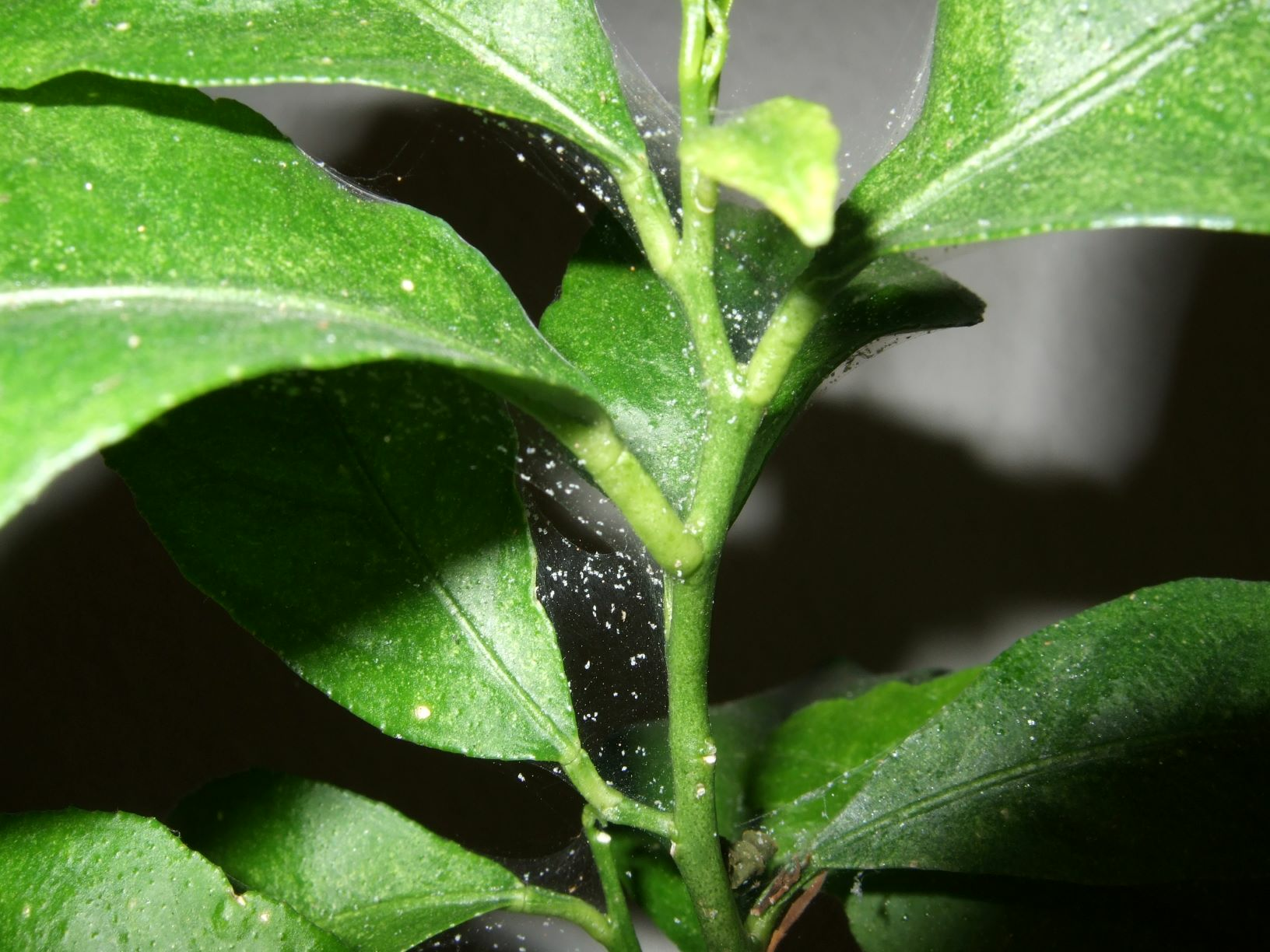Spider mites
How to get rid of spider mites
The pests can infest your plants in the bed as well as your indoor plants. They have piercing-sucking mouthparts with which they pierce and suck out the leaf cells on the underside of the leaves. Spider mites (Tetranychidae) are arachnids and therefore have 8 legs. In Germany, there are around 100 different species of spider mites, of which the "red spider", also known as the fruit tree spider mite (Panonychus ulmi), and the common spider mite (Tetranychus urticae) are probably the most common ones. You can recognize infestations of the common spider mite by a web or webbing, usually on the leaf axils or leaf edges. Tiny mites (0.2 - 0.8 mm/0.07 - 0.3 in) are found on the underside of the leaves. Their body color can vary from green to yellow to reddish brown. It prefers to infest plants such as cucumbers, roses or beans. But it does not stop at pumpkin plants or ornamental plants either. The fruit tree spider mite, on the other hand, hardly forms any webs. However, the infestation can be recognized by tiny light dots on the leaves and by the mites on the underside of the leaves. If the damage is severe, individual leaves may also dry out and fall off. As its name suggests, the mite species attacks fruit species such as apples, pears, plums, damsons and peaches, but also berry bushes such as blackberries, currants, strawberries and gooseberries. Spider mites feel most at home in sheltered conditions and are therefore often found in greenhouses or rooms. Like aphids, the pests can transmit viral diseases to plants, which are difficult to treat. It is therefore important to recognize or prevent spider mites at an early stage.
Prevention
- Spray the plants regularly with water during dry periods. This reduces the activity of spider mites. However, make sure that it does not get too damp, especially in the greenhouse, as otherwise fungal diseases could spread
- Water the plants sufficiently to keep them strong
- A layer of mulch can help prevent the plants from drying out, especially on hot summer days. A layer of mulch can help prevent dehydration, especially on hot summer days
- Clean climbing aids such as bean poles or tomato spirals thoroughly after use so that no pests are transferred or overwinter on them
- Support plants with balanced fertilisation. It is important not to fertilise with too much nitrogen, otherwise the plants will grow too quickly and the cell walls will remain thin. We therefore recommend a potassium-emphasised fertilisation, for example with nettle or comfrey manure.
- Trunk care for fruit trees: Protect endangered trees with a white trunk coating in autumn. You can also buy organic paint variants here
- Encourage beneficial insects such as ladybirds, predatory bugs, ground beetles, parasitic wasps or spiders. For example, through stone piles, deadwood piles, hedges or other natural garden elements. Specialised ichneumon wasps or lacewing larvae can also be purchased from specialist retailers.
Treatment
- For light infestations, regularly rinse bedding and houseplants with water. Potted plants can also be placed in a clear plastic bag. The moisture in the bag will repel the pests
- Spray horsetail or tansy broth. Horsetail decoction: 1 kg/2.2 pd of fresh herb to 10 L/21 pt for 24 hours. Then boil for half an hour. When cool, strain and spray several times a day. Tansy broth: 300 - 500 g/10.6 - 17.6 f. oz. of fresh herb to 10 L/21 pt of water. Strain after 24 hours and spray on affected areas several times a day: 80 g/2.8 in to 10 L/21 pt of hot water. Leave to steep for at least 5 hours. Also effective against fungal diseases
- Remove affected parts of plants that can be cut and disposed of with garden waste
- Use beneficial insects such as predatory mites or gall midges. These act as natural enemies of spider mites and can be purchased from specialist retailers. Beneficial insects are particularly effective in greenhouses
- Sprinkle lime dust on affected plants. The mites rub against the fine grains and bleed to death
- Spray with neem oil.
Paramecium, CC BY-SA 3.0

